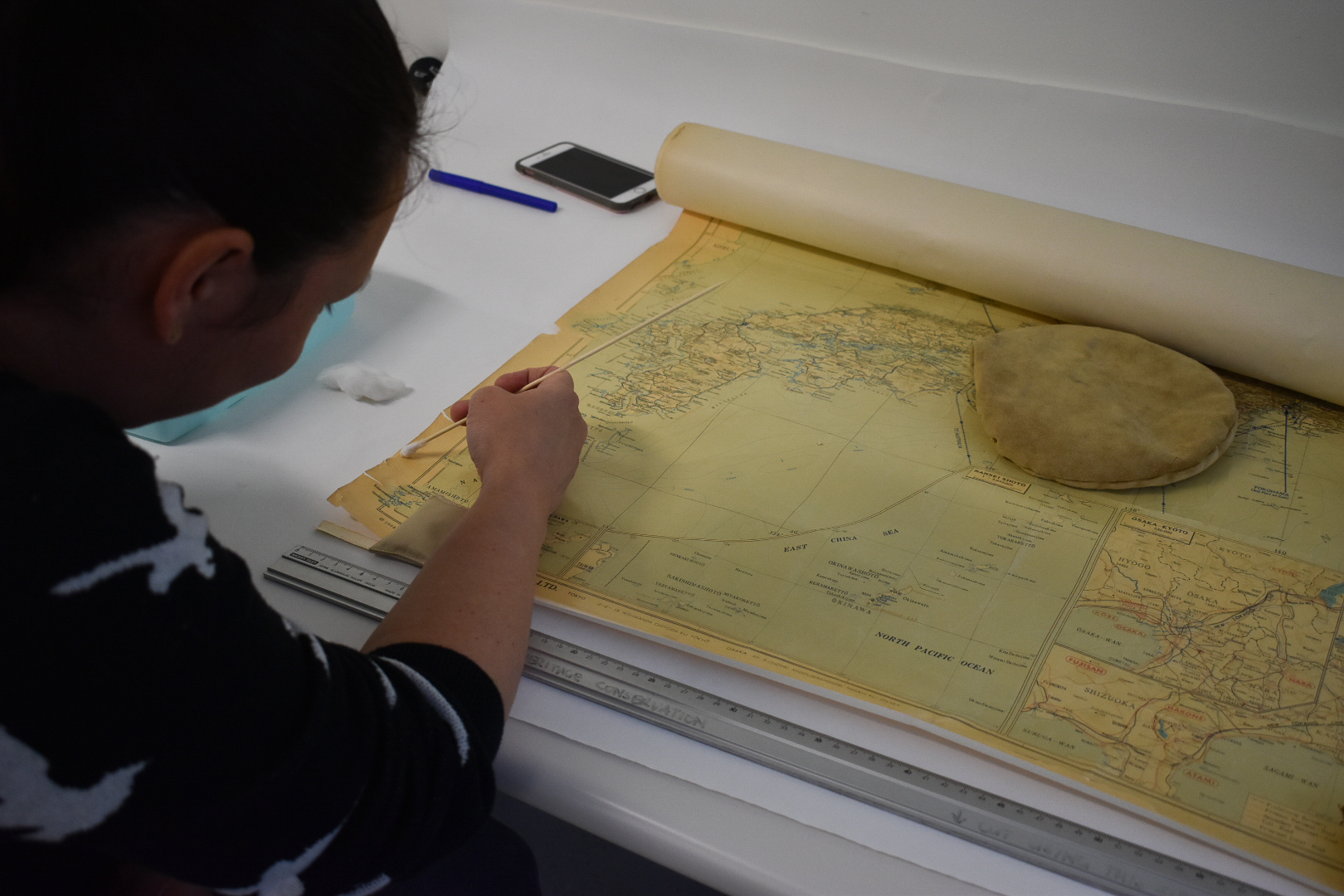Andy Visser
22 July 2019: A cohort of seven University of Canberra students has been in the throes of restoring a collection of maps dating back to the early 1900s in the Faculty of Arts and Design’s Culture and Heritage work integrated learning unit this Winter Semester.
The collection, owned by the Australian National University’s (ANU) School of Asia and Pacific, was entrusted to the University of Canberra’s Faculty of Arts and Design’s Creative Futures and Heritage team for restoration.
The unit included an intensive hands-on approach to understanding the various aspects, qualities and treatments of paper and its evolution over time as a printing material.
“This unit provided the ideal opportunity for students to gain an understanding of the value, purpose and intent of maps as they were produced over time, their historical value and relevance in today’s context and how a collection can provide significance to learning and life today,” said Assistant Professor Dr Alison Wain, Discipline Lead of Cultural Heritage and Conservation at the University of Canberra.
From scraping stubborn adhesive off the back of the biggest map in the collection, to removing aged shellac that had been painted over the surface of another, and restoring a very brittle map torn into 3 pieces, many practical activities and skills were learned in the unit.

“These maps have had interesting and long lives and the quality of paper differed from one map to another dependent on the location of the printing press, the printing method and time of printing. It made for a very intriguing process and provided a great introduction to restoring paper collections,” said Mr Ian Batterham, paper conservator and sessional member of staff in the University’s Faculty of Arts and Design’s Future Heritage team.
One of the oldest maps, a map of China dating to the early 1900s, had deteriorated substantially.
“It was such an interesting process because we watched the map transform over a few days,” said Ms Maren Innes, a third-year culture and heritage student. “After the first wash we were able to see the yellowing of the old paper reduce, bringing out the original colours of the map, and because of it being so brittle the map’s restoration was so rewarding.”
Once completed, the map was a true reflection of its former glory, after being applied to a backing of Japanese tissue paper that will keep it in pristine condition for a number of years.
“It has been really interesting. We learnt so many practical skills that cannot really be taught in a class environment. We now have a far better understanding of the chemical processes involved in the paper restoration process, practical applications and the importance of historical relevance of items within a collection,” said Alex Smith, a second-year culture and heritage student.
“One thinks that paper is all the same, but this unit has shown us that paper offers a myriad of historical clues to a collection’s era, period or historical timeframe.”
Photographs by Madeleine Wood.


